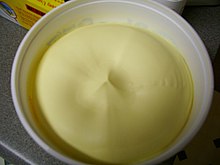
WHAT IS FOOD COLORS?
by : RU
-
What Is Food coloring?
Food coloring, or color additive, is any dye, pigment, or substance that imparts color when it is added to food or drink. They come in many forms consisting of liquids, powders, gels, and pastes. Food coloring is used in both commercial food production and domestic cooking. Food colorants are also used in a variety of non-food applications, including cosmetics, pharmaceuticals, home craft projects, and medical devices
-
Purpose of food coloring
People associate certain colors with certain flavors, and the color of food can influence the perceived flavor in anything from candy to wine.[3] Sometimes the aim is to simulate a color that is perceived by the consumer as natural, such as adding red coloring to glacé cherries (which would otherwise be beige), but sometimes it is for effect, like the green ketchup that Heinz launched in 2000. Color additives are used in foods for many reasons including:[4][5]
- To make food more attractive, appealing, appetizing, and informative
- Offset color loss due to exposure to light, air, temperature extremes, moisture and storage conditions
- Correct natural variations in color
- Enhance colors that occur naturally
- Provide color to colorless and "fun" foods
- Allow consumers to identify products on sight, like candy flavors or medicine dosages
-
History of artificial food colorants
The addition of colorants to foods is thought to have occurred in Egyptian cities as early as 1500 BC, when candy makers added natural extracts and wine to improve the products' appearance.[6] During the Middle Ages, the economy in the European countries was based on agriculture, and the peasants were accustomed to producing their own food locally or trading within the village communities. Under feudalism, aesthetic aspects were not considered, at least not by the vast majority of the generally very poor population.[7] This situation changed with urbanization at the beginning of the Modern Age, when trade emerged—especially the import of precious spices and colors. One of the first food laws, created in Augsburg, Germany, in 1531, concerned spices or colorants and required saffron counterfeiters to be burned.[8]
The addition of food coloring, such as beta-carotene, gives naturally white margarine a yellow, butter-like color.[9][10]
With the onset of the industrial revolution, people became dependent on foods produced by others.[7] These new urban dwellers demanded food at low cost. Analytical chemistry was still primitive and regulations few. The adulteration of foods flourished.[7] Heavy metal and other inorganic element-containing compounds turned out to be cheap and suitable to "restore" the color of watered-down milk and other foodstuffs, some more lurid examples being:[11]
- Red lead (Pb3O4) and vermillion (HgS) were routinely used to color cheese and confectionery.
- Copper arsenite (CuHAsO3) was used to recolor used tea leaves for resale. It also caused two deaths when used to color a dessert in 1860.
Sellers at the time offered more than 80 artificial coloring agents, some invented for dyeing textiles, not foods.[11]
Thus, with potted meat, fish and sauces taken at breakfast he would consume more or less Armenian bole, red lead, or even bisulphuret of mercury [vermillion, HgS]. At dinner with his curry or cayenne he would run the chance of a second dose of lead or mercury; with pickles, bottled fruit and vegetables he would be nearly sure to have copper administrated to him; and while he partook of bon-bons at dessert, there was no telling of the number of poisonous pigments he might consume. Again his tea if mixed or green, he would certainly not escape without the administration of a little Prussian blue...[12]
Many color additives had never been tested for toxicity or other adverse effects. Historical records show that injuries, even deaths, resulted from tainted colorants. In 1851, about 200 people were poisoned in England, 17 of them fatally, directly as a result of eating adulterated lozenges.[7] In 1856, mauveine, the first synthetic color, was developed by Sir William Henry Perkin and by the turn of the century, unmonitored color additives had spread through Europe and the United States in all sorts of popular foods, including ketchup, mustard, jellies, and wine.[13][14] Originally, these were dubbed 'coal-tar' colors because the starting materials were obtained from bituminous coal.[15][5]
Synthetic dyes are often less costly and technically superior to natural dyes

